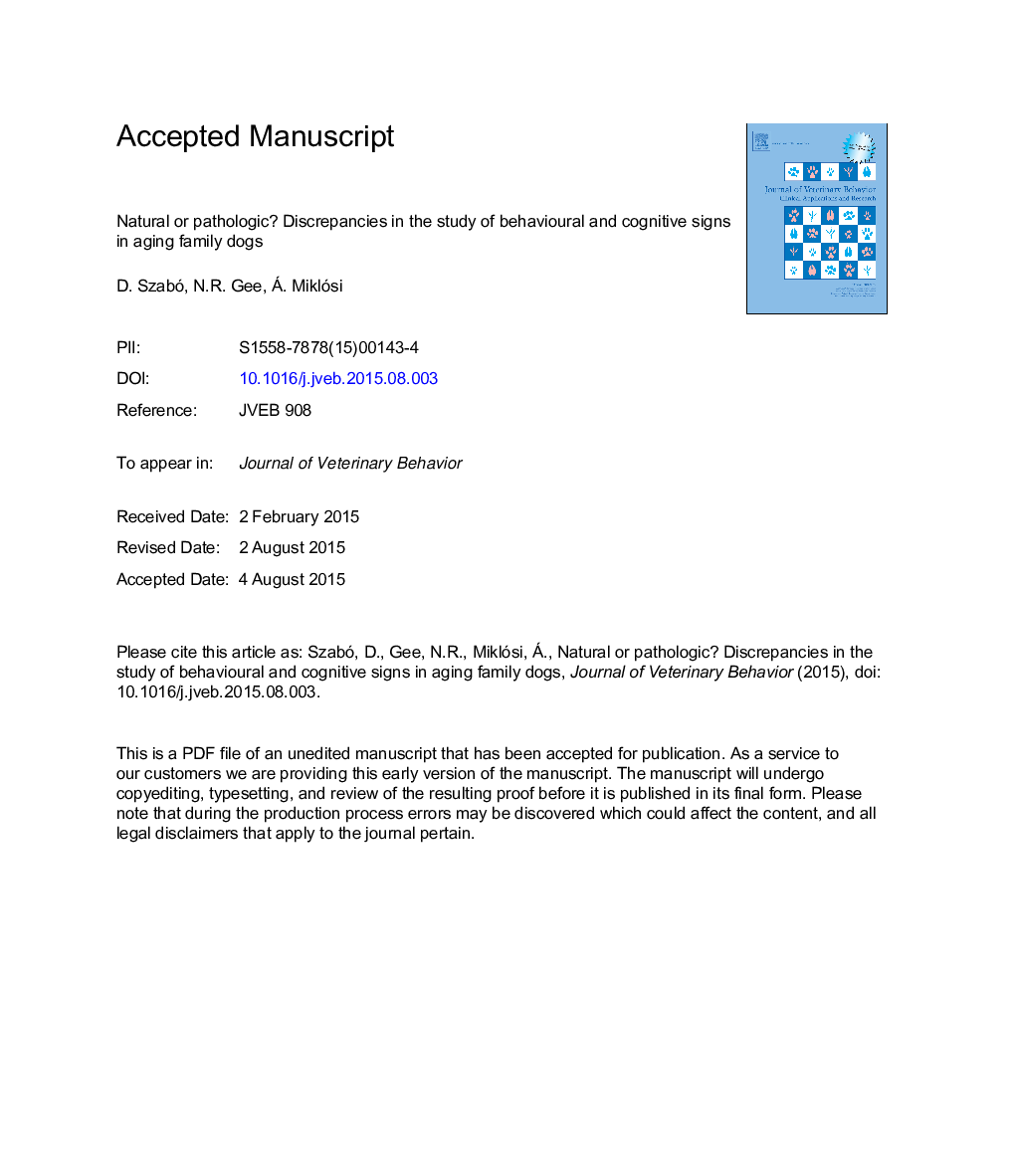| Article ID | Journal | Published Year | Pages | File Type |
|---|---|---|---|---|
| 8484324 | Journal of Veterinary Behavior: Clinical Applications and Research | 2016 | 45 Pages |
Abstract
In recent decades, typical and pathologic behavioral and mental aging in family dogs has received increased attention. This article reviews the literature and highlights methodological inconsistences in this field. Most methodological concerns originate from disregarding the interaction of proximate and ultimate causes of this phenomenon. The literature review revealed several studies on family dogs that lack the methodological rigor needed for establishing a well-defined phenotype. The main issues include the chronological threshold accepted for aged dogs, the phenotypical features regarded as pathologic and the method applied to validate different behavioral scales. In addition, no baseline has been established for many studied behavioral and mental features by analyzing healthy adult population of dogs. In family or pet dog samples, the difference in the life expectancy of dog breeds is rarely taken into account, so it is not clear whether the observed changes are due to the normal aging process or are signs of an accelerated decline (senile dementia). We suggest that questionnaire studies should be complemented by behavior test batteries to validate data obtained from owners, and more attention should be given to the composition of the populations involved in the research. An effort should be made to discriminate normal or typical and pathologic aging in future work. Only by adopting a more rigorous approach can we identify risk and protective factors in dogs and reveal the aspects in which the family dog can provide a good animal model for human aging.
Related Topics
Life Sciences
Agricultural and Biological Sciences
Animal Science and Zoology
Authors
Dóra Szabó, Nancy R. Gee, Ádám Miklósi,
